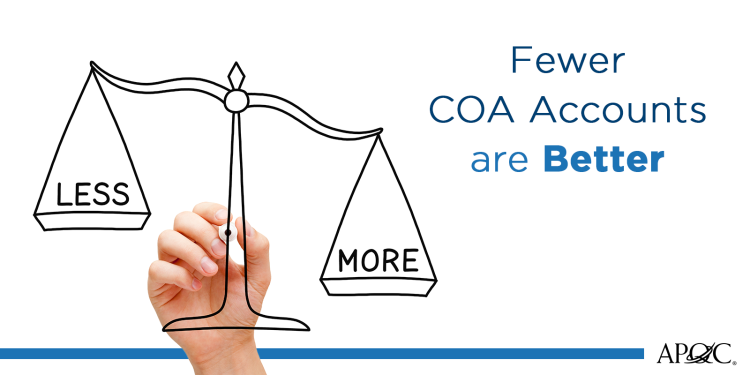
The chart of accounts (COA) is a listing of the general ledger account names and identification numbers arranged in the order in which they customarily appear in financial statements. It can also include a description of what should be included in each account. The COA is a key accounting tool used for transaction processing, accounting activities, reconciliations, and financial reporting.
Fewer COA Accounts are Better
When considering your chart of accounts (COA), fewer is always better.
An oversized COA can create challenges, including more review time, more reconciliations, additional system maintenance, and greater chances for coding errors to occur. For example, reconciling and investigating the potentially numerous account variances from a mushrooming COA is a time-consuming and tedious endeavor. The time spent on this activity not only drives up the time needed to close the accounting period in your system but can also delay the time to report on the respective period’s financials.
How to Stop COA Overgrowth Before It Starts
Regular maintenance of the COA is one of the most effective ways to guard against proliferation. Rather than waiting until a project requires COA cleanup, CFOs or controllers should perform periodic (at least annual) reviews of the COA and eliminate inactive accounts as needed. If a high percentage of the accounts in your COA have little activity or a low balance, streamlining and reduction are other ways to prevent your COA from growing. Learn more about why fewer accounts are better in a COA and tap into the average number of COA accounts.
Read APQC’s Number of Accounts in the Chart of Accounts.